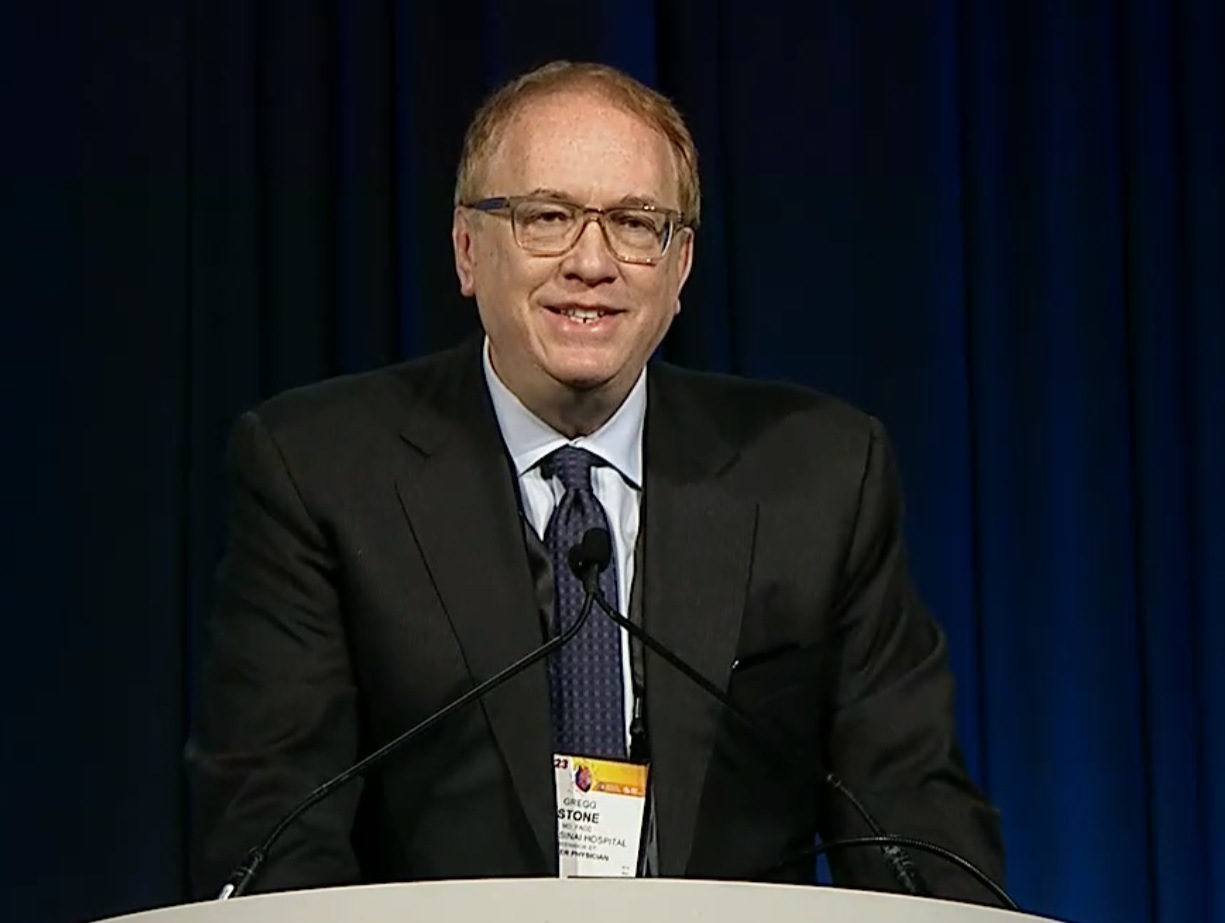
Using intravascular imaging (IVI) to guide drug-eluting stent implantation during complex percutaneous coronary intervention (PCI) is safer and more effective for patients with severely calcified coronary artery disease than conventional angiography, results of the ECLIPSE trial have shown.
Presented during a featured clinical research session at the 2025 American College of Cardiology (ACC) scientific session (29–30 March, Chicago, USA) by Gregg W Stone (Icahn School of Medicine at Mount Sinai, New York, USA), results of the study “could shift treatment options for high-risk patients”, according to investigators.
“The ECLIPSE trial shows that use of IVI to guide coronary stenting in severely calcified lesions prevents death, stent thrombosis, and unplanned repeat procedures in this high-risk patient population,” said Stone, who is the first author of the study. “These results extend the strong recommendations from recent US and European societal guidelines that intravascular imaging with either optical coherence tomography (OCT) or intravascular ultrasound (IVUS) should be routinely used during complex coronary stent procedures.
“Currently, IVI is performed in only 20 to 25% of these cases in the USA. I suspect its use will rapidly accelerate given study after study now showing reductions in death, stent thrombosis, and nearly every other adverse outcome after PCI when intravascular imaging is used.”
Patients with coronary artery disease—plaque buildup inside the arteries that leads to chest pain, shortness of breath, and heart attack—often undergo PCI, a non-surgical procedure in which interventional cardiologists use a catheter to place stents in the blocked coronary arteries to restore blood flow. About one-third of these cases in the United States—hundreds of thousands a year—have moderate or severely calcified lesions, where calcium builds up in the arteries. Ten percent of those cases are severe, meaning the blood vessels in the arteries essentially turn to bone, making the stenting procedure more challenging and higher-risk. Interventional cardiologists most commonly guide the PCI catheter by using angiography, which involves a special dye (contrast material) and X rays to see how blood flows through the heart arteries to highlight any blockages.
In the ECLIPSE study, researchers analysed the outcomes of PCI in severely calcified lesions of 2,005 patients to see if IVI guidance improves survival without adverse cardiac events compared with angiography guidance.
Patients with severely calcified coronary lesions were randomised at 104 sites across the USA. One group, 1,246 patients or 62%, had PCI with either OCT or IVUS guidance, and the other 759 patients, or 38%, had PCI with angiography guidance. The primary endpoint was the one-year rate of target vessel failure, the composite occurrence of either cardiac death, target-vessel myocardial infarction, or ischemia-driven target-vessel revascularisation.
Overall rates of target vessel failure were 26% lower among patients who had IVI guidance than among those with angiography guidance. Researchers also observed a significant reduction in all-cause death, stent thrombosis, and target lesion and vessel revascularization among patients in whom intravascular imaging was used compared with angiography.
Researchers further analysed the two imaging modalities—IVUS and OCT—to determine whether one was more effective. In the unadjusted analysis, patients had better outcomes with OCT compared to IVUS; however, the differences between the two were no longer significant when adjusting for factors including age, diabetes, and the number and severity of lesions.
“Overall, both OCT and IVUS were effective; additional studies are required to determine whether OCT is more beneficial in severely calcified lesions,” Stone adds. “Regardless, IVI with either OCT or IVUS should be used rather than angiography guidance to guide PCI in patients with severely calcified lesions.”
The ECLIPSE trial was funded by Abbott Vascular.













